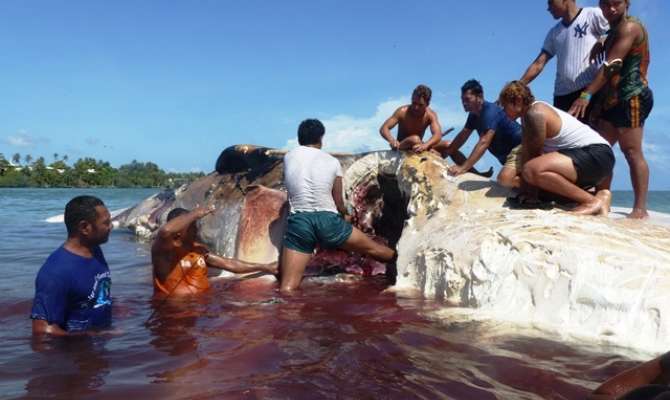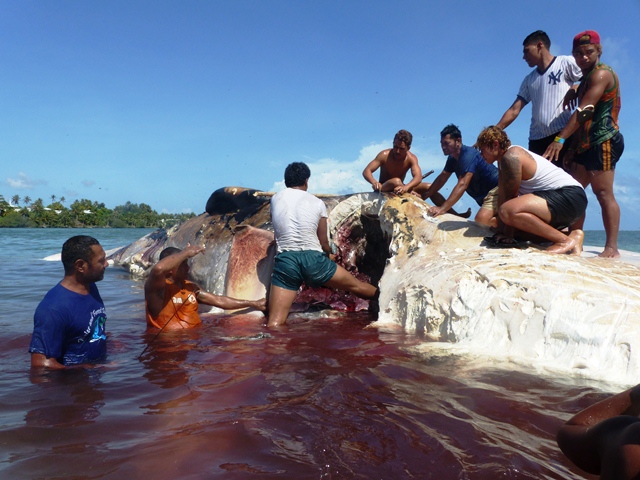
Biodiversity Conservation
On Tuesday 18 November the villagers of Letogo found a dead sperm whale in the lagoon between the shore and the reef. Police and Ministry of Natural Resources and Environment ( MNRE) staff attended the scene on the first day, and MNRE took samples for scientific analysis and warned local residents about the hazards posed by the decomposing whale.


However, when two staff from the Secretariat of the Pacific Regional Environment Programme (SPREP) visited the stranding site on Thursday morning, they were shocked to see the degree of danger to which people were exposing themselves. SPREP would like to remind everybody that there are a number of basic rules for dealing with a dead stranded whale, especially one that has been dead for some time and is likely to be a source of dangerous viruses and bacteria.
Anyone who is handling this animal in any way should be wearing rubber gloves, long-sleeved shirts and trousers and shoes or boots. Nobody should be allowed into the water with jandals or bare feet, legs or hands. Besides being a prime source of potentially deadly bacteria and viruses, a rotting carcass like this may also attract sharks into the lagoon. SPREP has received reports of a large shark feeding on the whale.
Whale strandings are rare events in Samoa, but SPREP believes that there are lessons learned from other countries where strandings are more common that should be kept in mind. The key points are:
- Efforts to dismember any large whale, especially one that is decomposing, should only be carried out by people who are adequately protected from infection by wearing the right clothing, and preferably have received some training;
- Knives and other implements should be kept sharp and great care should be taken. It is extremely dangerous to have numerous onlookers at the scene;
- Dismembering a carcass that is still in the water is much harder than on land, where machinery such as diggers or front-end loaders can be used to make the work easier;
- Working with the carcass on the beach will also eliminate the danger of sharks or other scavengers, and may make disposal of the carcass easier.
Whether the work is carried out in the water or on the beach, the public should be kept at a safe distance – police may be needed to enforce a no-go zone to minimise the danger to the public.
SPREP acknowledges that disposal of such a large carcass is a major problem - even if it could be taken back over the reef to deeper water, it may well just wash up somewhere else in an even smellier state of decomposition. Burying in the sand would reduce the smell but would need a very big hole.
Pulling it out of the water with a bulldozer or digger and leaving it to rot on a beach might have been the best option for this whale. Although it would have been be smelly for a few weeks, decomposition would have occurred quickly. However, this is probably no longer an option. On Friday, SPREP was advised that a tiger shark up to 3 metres in length was feeding on the whale, a vivid reminder of the real dangers for public safety that concern SPREP.
Next year, SPREP will be launching its Year of the Whale campaign, and there will be opportunities to learn more about safe management of stranded whales in Samoa and other member countries.
For more information, contact Michael Donoghue, Threatened and Migratory Species Adviser for SPREP, at michaeld@sprep.org (ph: 7255417)